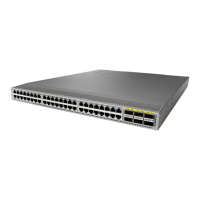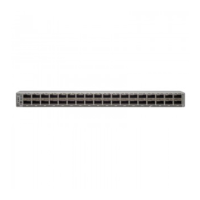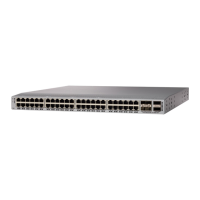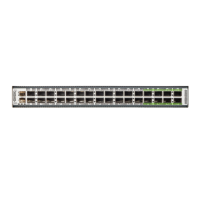SUMMARY STEPS
1. configure terminal
2. (Optional) show role
3. username user-id [password [0 | 5] password] [expire date] [role role-name]
4. username user-id ssh-cert-dn dn-name {dsa | rsa}
5. exit
6. (Optional) show user-account
7. (Optional) copy running-config startup-config
DETAILED STEPS
PurposeCommand or Action
Enters global configuration mode.configure terminal
Example:
Step 1
switch# configure terminal
switch(config)#
Displays the user roles available. You can configure other
user roles, if necessary.
(Optional) show role
Example:
Step 2
switch(config)# show role
Configures a user account. The user-id argument is a
case-sensitive, alphanumeric character string with a
username user-id [password [0 | 5] password] [expire
date] [role role-name]
Step 3
maximum length of 28 characters. Valid characters are
Example:
uppercase letters A through Z, lowercase letters a through
switch(config)# username NewUser password 4Ty18Rnt
z, numbers 0 through 9, hyphen (-), period (.), underscore
(_), plus sign (+), and equal sign (=). The at symbol (@) is
supported in remote usernames but not in local usernames.
Usernames must begin with an alphanumeric character.
The default password is undefined. The 0 option indicates
that the password is clear text, and the 5 option indicates
that the password is encrypted. The default is 0 (clear text).
If you do not specify a password, the user might
not be able to log in to the Cisco NX-OS device.
Note
If you create a user account with the encrypted
password option, the corresponding SNMP user
will not be created.
Note
The expire date option format is YYYY-MM-DD. The
default is no expiry date.
User accounts can have a maximum of 64 user roles.
Specifies an SSH X.509 certificate distinguished name and
DSA or RSA algorithm to use for authentication for an
username user-id ssh-cert-dn dn-name {dsa | rsa}
Example:
Step 4
existing user account. The distinguished name can be up to
Cisco Nexus 9000 Series NX-OS Security Configuration Guide, Release 9.x
161
Configuring User Accounts and RBAC
Configuring User Accounts

